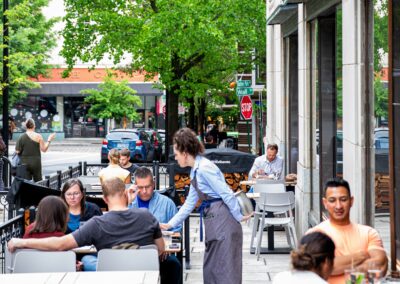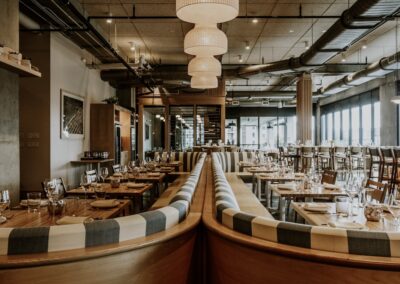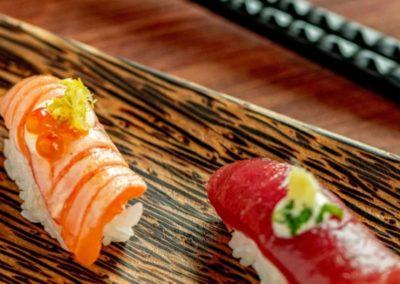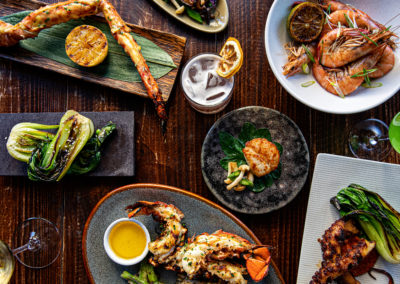why compare independent and branded hotels in the first place?
During our forty-five years of combined experience in the management of independent, boutique and upper-upscale and luxury hotels, we have had the opportunity to participate in the success of dozens of upper-upscale independent hotels in markets where the independent hotels compete against chain affiliated competitors. More noteworthy is that we have witnessed the independent boutique hotels take more than fair market share from chain affiliated competitors and consistently penetrate their respective competitive sets by more than 100%. However, we have wondered if those independent boutique hotels were likewise more profitable.
In recent years we have had the opportunity to open and operate some chain affiliated, soft-branded boutiques and see their P&Ls. Not surprising, they were less profitable due to the fees and participation in mandatory systems and programs imposed by the chain’s brand. As we observed more boutique hotel developers electing to affiliate with the various chain’s soft brands, often largely due to their investors and/or lenders inability to get comfortable with a hotel project without chain affiliation, we lamented that there was not the data readily available to support and prove to investors and lenders that an unaffiliated boutique hotel of good quality and well operated by a qualified operator who understands effective marketing and room inventory distribution for independent hotels can not only compete with the chain affiliated properties but outperform them on GOPAR and EBITDA.
In the table below, are the results of comparing twenty upper-upscale independent, boutique hotels with twenty that are chain affiliated. As one may see, the independent hotels enjoy greater revenue and profitability.
The Strategy
The internet effectively commoditized hotel product driving selection based upon price as the ubiquitous chain flags emulated each other more and more failing to successfully differentiate their products to the travelling public who now principally shop online (estimated to be more than 85% of hotel guests). The fact that the major brands added over sixty new flags in 2019 only emphasizes their struggle to effectively differentiate their franchisees’ hotels from their competitors.
Basic business strategy teaches that the only way to overcome commoditization is through differentiation. This is bad news for chain flagged hotels since their ubiquity and need for consistency (i.e., sameness) impedes their ability to be unique. Independent hotels have the freedom and agility to differentiate and separate themselves from the crowded field of confusing, redundant chain flags. The management responsible for the marketing strategy of the independent hotel must understand and engage in the essential tactics of marketing in today’s hotel marketing environment.
“Not surprising, (branded boutique hotels) were less profitable due to the fees and participation in mandatory systems and programs imposed by the chain’s brand.“
Understanding the shopping and purchasing behavior of the hotel consumer is also critical to successfully executing the marketing tactics. The information collected in studies conducted by lodging and travel research firms reveal that today’s upscale hotel guest engages in a four-step decision making process.
- Visit an aggregator’s website to see the choice of hotel product in the destination (e.g., Expedia) and find up to three hotels of interest, if there are even three in the destination that appeal to the shopper.
- Visit the proprietary website(s) of the hotel(s) that were identified on the aggregator’s website and narrow down the choice to a favorite.
- Visit TripAdvisor or Google Reviews to read reviews before making a final decision.
- Book it.
Understanding the decision-making process described above informs the following tactics:
- The hotel must have a good strategy for meta search on Google and TripAdvisor so that once shoppers are confident in the hotel’s online reviews, there should be as little friction as possible in the path to book directly with the hotel.
- Typically, the hotel needs to be on third party websites such as online travel agents (OTAs) like Expedia and others and ideally appear high up in the search results on OTA sites. This is often referred to as “the billboard effect”. Therefore, merchandising the hotel through collaborative revenue management and digital marketing teams is a key tactic to ensure that an independent hotel is in every booking channel possible. In rare cases, highly successful, established boutique hotels may elect to discontinue use of OTAs and only accept direct bookings and still be able to maintain their share of the market demand. Another disadvantage of chain affiliation is that a member hotel may not stop selling through OTAs no matter if they absolutely do not need that expensive booking channel to fill the hotel.
- Management must create a distribution infrastructure through implementation of available technology to provide real-time, seamless connectivity of the global distribution system (GDS) and world wide web to the hotel’s property management system thereby placing a hotel’s room inventory and rates into all third-party booking channels and onto the respective hotel’s proprietary website.
- The hotel must have a visually appealing and user-friendly proprietary website with the latest conversion science applied and fully optimized for superior positioning in all search engine results returned in internet searches of the destination.
- The online booking engine that is integrated with the proprietary website must be able to accommodate robust content (detailed descriptive copy and images for every room type available) and be engineered around conversion science to induce the highest possible conversion of shops to reservations. It must also be adequately designed to match the hotel’s main website to ensure a seamless user experience across both domains. Logos, colors, fonts, menu hierarchy, and backlinks are all important to match for the booking engine to “make sense” to the customer.
- The online reputation of the hotel must be superior to competitors. Online review ranking positions determine pricing power for any hotel. Research by Cornell University has shown that every single position improvement on TripAdvisor on average in the US was worth a .089 percent change in revenue per available room (“RevPAR”). This means, for example, that a hotel whose ranking goes up or down 5 places on TripAdvisor would experience a RevPAR change of nearly four and a half percentage points. Based upon the shopping behavior previously outlined, the shopper must find the hotel has a superior ranking position and minimum negative reviews.
- The website must be so compelling and user friendly that when the shopper has reached her decision and is ready to book that the shopper returns to the proprietary website to make the reservation through the property’s booking engine rather than an OTA. One tactic that helps do this is the integration of guest feedback on the hotel’s website. The latest retargeting tools including incentive offers in targeted ads after the shopper has departed the proprietary website are also helpful to drawing the consumer back to the proprietary website to make the booking.
“Managing an independent hotel is simply harder than running a branded hotel. Many firms aren’t up to the task.“
Managing the guest experience to ensure guest recovery when there is a problem before a guest posts a negative online review and to encourage guests to post positive reviews when pleased is essential to a positive exploitation of online reviews and rankings. One cannot overstate the importance of the online ranking and reviews to both win the business and have pricing power which has a direct relationship to changes in RevPAR. Tactics that implement this element of the strategy are:
- Deployment of a customer relationship management (CRM) system that has features enabling both email and text to and from in-house guests is vital. Such systems integrated with the property management system (PMS) have succeeded in enabling hotel management to intercept guest perceptions both good and bad and to make use of that information to either engage in guest recovery or exploit a guest’s positive experience and perception of the hotel by encouraging that guest to share the experience online and through social media.
- Implementing a CRM capable of high-quality, high-touch communications with guests before, during, and after the stay is also important. In-stay and post-stay communications may help catch complaints not shared directly with staff or management at the property and provide an opportunity to address the matter and avert a negative online review. Another upside of a CRM is the development of a database of customer emails enabling regular communication to extend promotions and offers to past and potential customers. Adding interesting content to these strengthens the brand relationship with the guests. These touchpoints also create opportunities for smart hoteliers to strategically weave in opportunities to generate marginal revenue. This could be in the form of selling room upgrades, add-ons, and/or upsells, like late check out. These customizations increase guest satisfaction while their revenues in turn help offset some, if not all, of the cost of the CRM platform.
These tactics are complemented and reinforced with continuous, traditional marketing and sales efforts to keep the hotel in the travel media and garner top accolades.
- Establish and maintain contact and relationships with lifestyle and travel editors and writers.
- Develop relationships with each hotel’s destination tourism development authority.
- Regularly develop unique angles and creative programming to pitch to editors and writers and to talk about in regular media releases about each hotel.
- Writing annual business plans that look at every market segment, the competitive landscape, and the prior year’s business patterns are essential for getting the most from the direct sales team.
Direct selling is also vital. Brands offer meeting planners points as incentives and has provided loyal planners to certain brands. A sales team at a branded hotel is more of an inbound sales person while those at independent hotels are outbound sales professionals. Hiring for these roles can make or break a year at any property. Excellence requires attracting or inspiring exceptional people in sales roles and even in important guest touchpoint roles (e.g., guest reception, concierge, door staff, valet, bell staff, etc.). Consistently attracting and retaining top talent, similar to the consumer who is bored with the same old flag hotel experience and craves uniqueness and authenticity, is made easier for high-quality boutique hotels because people who work in the hospitality industry want to work at beautiful, unique hotels with interesting clientele and managed by exciting groups with visionary leaders.
Managing an independent hotel is simply harder than running a branded hotel. Many firms aren’t up to the task.
A combination of grit, independent experience, technological tools, distribution infrastructure, reputation management, strong CRM, and superior talent to engage with clients result in a formidable and competitive independent hotel can take and hold significant market share.












